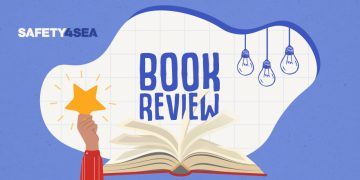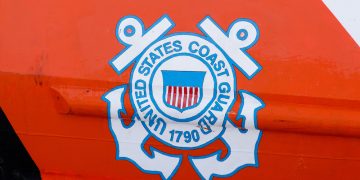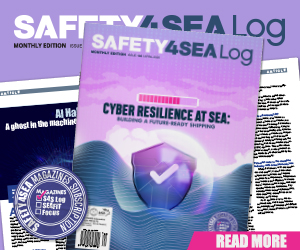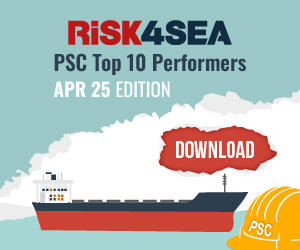PSCO’s checklists have a dedicated LSA section with specific items to be checked. Some PSC authorities issue specific information and PSC findings on LSA equipment (eg AMSA). This a practice to declare the importance of such items and systems. After all, LSA is the type of equipment which aims to provide seafarers protection in case of emergency.
The results of Last 5 Years (2016-2020) in Table 1 show the importance of LSA in PSC inspections:
|
Deficiency Category(all) |
Detainable Deficiency Category |
|||
|
Regime |
Share |
Rank |
Share |
Rank |
|
Global |
10.1% |
5 |
8.5% |
5 |
|
Paris MoU |
8.5% |
5 |
7.3% |
7 |
|
Tokyo MoU |
12.5% |
3 |
8.2% |
6 |
|
USCG |
14.6% |
3 |
9.3% |
4 |
|
Vina Del Mar |
8.8% |
5 |
12.50% |
2 |
|
AMSA |
8.9% |
5 |
8.50% |
5 |
Table 1: Results of PSC Inspections during 2016-2020 / Source RISK4SEA
Taking into consideration the Deficiency Code Lists in all PSC Regimes (as more or less it is similar), the section 11 is dedicated to Life Saving Appliances. There are 36 Deficiency Codes used to describe items found on board related to LSA (Table 2)
|
Code |
Description |
Code |
Description |
|
11101 |
Lifeboats |
11119 |
Immersion suits |
|
11102 |
Lifeboat inventory |
11120 |
Anti-exposure suits |
|
11103 |
Stowage and provision of lifeboats |
11121 |
Thermal Protective Aids |
|
11104 |
Rescue boats |
11122 |
Radio life-saving appliances |
|
11105 |
Rescue boat inventory |
11123 |
Emergency equipment for 2-way comm. |
|
11106 |
Fast rescue boats |
11124 |
Embarkation arrangement survival craft |
|
11107 |
Stowage of rescue boats |
11125 |
Embarkation arrangements rescue boats |
|
11108 |
Inflatable liferafts |
11126 |
Means of recovery of life saving appliances |
|
11109 |
Rigid liferafts |
11127 |
Buoyant apparatus |
|
11110 |
Stowage of liferafts |
11128 |
Line-throwing appliance |
|
11111 |
Marine evacuation system |
11129 |
Operational readiness of lifesaving appliances |
|
11112 |
Launching arrangements for survival craft |
11130 |
Evaluation, testing and approval |
|
11113 |
Launching arrangements for rescue boats |
11131 |
On board training and instructions |
|
11114 |
Helicopter landing and pick-up area |
11132 |
Maintenance and inspections |
|
11115 |
Means of rescue |
11133 |
Personal and group survival equipment |
|
11116 |
Distress flares |
11134 |
Operation of Life Saving Appliances |
|
11117 |
Lifebuoys incl. provision and disposition |
11135 |
Maintenance of Life Saving Appliances |
|
11118 |
Lifejackets incl. provision and disposition |
11199 |
Other (life saving) |
Table 2: Deficiency Codes related to LSA
Reviewing the results of PSC findings for the last 5 years (2016-2020), the most common deficiencies marked on LSA are shown in Table 3
Global PSC Findings (2016-2020)
|
Description |
Deficiency |
Detainable Def. |
|||
|
Share |
Number |
Share |
Number |
||
|
11101 |
Lifeboats |
1.8% |
11655 |
2.0% |
995 |
|
11102 |
Lifeboat inventory |
1.3% |
8912 |
– |
– |
|
11104 |
Rescue boats |
1.1% |
7541 |
1.1% |
547 |
|
11105 |
Rescue boat inventory |
0.5% |
3805 |
– |
– |
Table 3: Most Common Deficiencies (2016-2020)/ Source RISK4SEA
According to data, the most findings are related to boats (Lifeboats and Rescue Boats). A high number of findings also include the inventories related to boats, however these findings usually do not lead to detentions. Following the above most common findings and having grouped what PSCOs have marked for each code critical issues can be identified, shown in table 4
|
Code |
PSC Officer Comment |
|
11101 – Lifeboats |
Inadequate equipment condition |
|
Not marked as required |
|
|
Securing equipment not as required |
|
|
Launching means not tested |
|
|
SWL missing from launching arrangements |
|
|
Engine not started |
|
|
Battery charger found disconnected |
|
|
Steering means inoperative |
|
|
Launching instructions missing |
|
|
Navigational lights inoperative |
|
|
Wrong navigational lights sectors |
|
|
Auto stop limit switches inoperative |
|
|
Broken windows |
|
|
Coxswain glass damaged (no visibility) |
|
|
Fuel tank found with low level of fuel |
|
|
Lub oil used not specific for -15o C activation |
|
|
Pins of both lifeboats’ skates seized seriously |
|
|
Crew seat belts were restricted with tape preventing crew from safe use |
|
|
11102 – Lifeboat inventory |
Not as required |
|
Items in Lifeboat not in accordance with inventory |
|
|
11104 – Rescue boats |
Inadequate equipment condition |
|
Not marked as required |
|
|
Securing equipment not as required |
|
|
Launching means not tested |
|
|
SWL missing from launching arrangements |
|
|
Engine not started |
|
|
Battery charger found disconnected |
|
|
Steering means inoperative |
|
|
Launching instructions missing |
|
|
Navigational lights inoperative |
|
|
Wrong navigational lights sectors |
|
|
Fuel tank found with low level of fuel |
|
|
Painter release device for rescue boat stacked and not flexible |
|
|
11105 -Rescue boat inventory |
Not as required |
|
Items in Rescue boat not in accordance with inventory |
|
11118 – Lifejackets incl. provision and disposition |
Inadequate equipment condition |
|
Crew not familiar with equipment use |
|
|
Lifejackets found without light and/or whistle attached |
|
|
Stored lifejackets inoperative |
|
|
Inadequate size of lifejackets distributed to crew |
|
|
Number of lifejackets not sufficient for the total number of persons on board |
|
|
Inspections records missing |
|
|
Maintenance records missing |
|
|
11119 – Immersion suits |
Inadequate equipment condition |
|
Crew not familiar with equipment use |
|
|
Stored immersion suits inoperative |
|
|
Inadequate size of immersion suits distributed to crew |
|
|
Number of immersion suits not sufficient for the total number of persons on board |
|
|
Inspections records missing |
|
|
Maintenance records missing |
|
|
Immersion suit zippers are not in working order or the seams are severely deteriorated, rendering them inoperable |
Table 4 / Source RISK4SEA
Life Saving Appliances are not only related to boats. As the number of standard Deficiency codes indicates, many items are related with seafarers survival equipment (lifejackets, lifebuoys, immersion suits etc.). There are some items of high importance that are related to such codes. For example, the condition and use of lifejackets is of most importance for preserving seafarers’ life at sea. Items related to such “personal” survival equipment, have usually to do with condition, size, components and familiarization of crew on how to use them.
AMSA guidance on Lifeboats
AMSA notes that lifeboats may be found deficient if any of below items cannot be properly demonstrated. If this happens, the ship will be detained until a lifeboat technician can fix it. Guidance can be summed up to the following:
- Check the release system and interlock is set correctly.
- If fitted, check the indicators are clear and in correct position.
- Keep the instructions secured in the boat.
- Check the lifeboat’s painter release is operable.
- Check the engine has enough fuel and is de-watered as necessary.
- Turn the lifeboat on and make sure there is no start delay.
- Test the propulsion allows it to go ahead and astern and that it can be steered in all directions.
- Keep the engine starting batteries maintained and in good condition.
USCG Alerts
UCSG has issued a number of alerts in order to notify operators on items related to LSA.
Safety Alert 13-16: Guidance on air inflatable life jackets
Safety Alert 09-17: Provides alert for inspection of lights of life jackets
Best Practices
Equipment Availability and Condition, Maintenance, and Familiarization / training are the three key issues for all operators to focus on.
#1 Equipment availability & Condition
LSA on board should follow the specifications included in SOLAS and LSA code. Special care should be given to the type of ship in order to have additional equipment if required (eg. Passenger ships)
#2 Maintenance
The LSA equipment following SOLAS Maintenance and manufacturers’ maintenance requirements, is to be checked in the specific intervals (generally divided in weekly, monthly, annually and 5yearly intervals). As included in the new amendments of SOLAS (January 2020), authorized and certified personnel, are assigned with the responsibility for inspection & maintenance.
#3 Familiarization & Training.
All crew members are certified on STCW Sections A-VI/1-1; A-VI/1-2; A-VI/1-3; A-VI/1-4, however this a generic approach. Additional specific familiarization is to be provided on LSA equipment on board following training session aiming to individual training (personal familiarization) or team training (drills).

































































